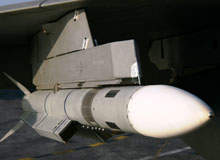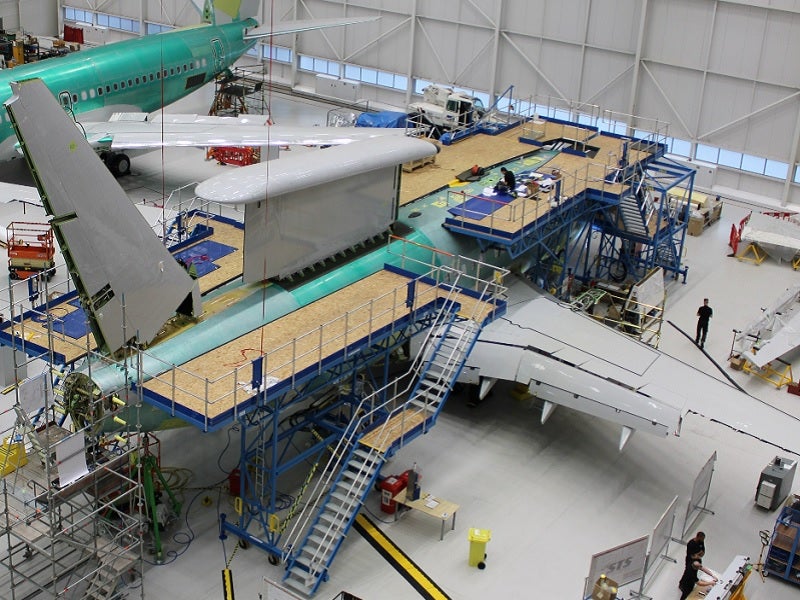
Meteor BVRAAM
The Meteor is a next-generation beyond-visual-range air-to-air missile (BVRAAM) developed by MBDA for the common requirements of France, Germany, Italy, Spain, Sweden and the UK. The ability to counter the current and future combat threats makes it one of the best AAMs in the world.
The UK Ministry of Defence placed a contract, on behalf of six nations, for the Meteor missiles in December 2002. Development firing trials of the missile were successfully concluded by 2012. The missile will be integrated on modern combat aircraft such as Eurofighter Typhoon, Saab Gripen Dassault Rafale and F-35 Joint Strike Fighter.
The Meteor BVRAAM features a state-of-the-art active radar seeker, a two-way data link communication and a solid-fuelled Ramjet motor to engage a wide range of targets with pinpoint accuracy. It also carries a blast fragmentation warhead with proximity and impact fuses for optimum lethality. The missile has high countermeasure resistance and offers the biggest ‘no escape zone.’
IRIS-T (Infra Red Imaging System Tail/Thrust Vector-Controlled)
The IRIS-T (Infrared Imaging System – Tail/Thrust Vector Controlled) is a new generation short-range AAM produced by Diehl BGT Defence. The missile can engage aerial targets within a range of 25km.
The missile was developed by Germany-based Diehl in partnership with companies from Greece, Italy, Canada, Norway and Spain to replace the AIM-9L Sidewinder AAM. The first series production version of the IRIS-T was delivered to the German Air Force in December 2005.
The IRIS-T can destroy a wide variety of targets with its high-explosive fragmented warhead fitted with a proximity fuse. It is fitted as a standard weapon for Eurofighter Typhoon, F-16, EF-18, Tornado and Gripen fighter aircraft. It is equipped with imaging infrared (IIR) seeker for high accuracy and all-aspect capability in severe electronic countermeasure (ECM) environments. The solid-fuelled motor with thrust vector control ensures the engagement of highly manoeuvrable targets.
MICA
The Mica (Missile d’Interception, de Combat et d’Autodéfense) is a short and Beyond Visual Range (BVR) AAM system developed by MBDA for the Rafale and advanced variants of Mirage 2000 combat aircraft.
The system includes two variants, namely MICA (EM) RF featuring an active radio frequency seeker and MICA IR featuring a dual waveband imaging infrared seeker to defeat enemy countermeasures. A surface-launched version named VL MICA is also available for use by naval or ground-based air defence systems.
The MICA is fitted with a HE warhead focused on splinter fragments and compatible with any advanced fighter aircraft. Its lightweight and compact dimensions allow the integration of up to six missiles on medium to lightweight fighters.
PYTHON-5
The Python-5 from Rafael Advanced Defence Systems is a fifth-generation AAM designed to engage very short range and near BVR targets. It is the newest member of the Python missile range and one of the most advanced AAMs in the world.
The Python-5 has high resistance against countermeasures and can be deployed on a wide range of aircraft such as F-15, F-16, Mirage, Saab Gripen and Su-30MKI. The missile is equipped with a new dual waveband focal plane array (FPA) imaging seeker, inertial navigation system and advanced infrared counter-countermeasures (IRCCM).
The Python-5 can be launched from very short to beyond visual ranges in lock-on before launch (LOBL) and lock-on after launch (LOAL) modes with full sphere launch capability. The solid fuel rocket motor and warhead ensure a high probability of success.
AIM-120 AMRAAM
Developed by Raytheon, the AIM-120 advanced medium-range air-to-air missile (AMRAAM) has proved its combat capabilities during missions in Iraq, Bosnia and Kosovo. Multi-shot capability, immunity to countermeasures, and low smoke solid-fuel rocket motor make the AIM-120 one of the world’s best AAMs.
The AMRAAM was ordered by 36 nations across the world. It can be attached aboard F-22, Eurofighter Typhoon, F-15, F-16, F/A-18, F-35 JSF, Sea Harrier, Tornado, Harrier II Plus, JAS-39 Gripen and the Norwegian advanced surface-to-air missile system (NASAMS).
The missile is guided by an internal active radar seeker complemented by an inertial reference unit and microcomputer. The missile carries a high-explosive fragmentation warhead with proximity and contact fuses.
AIM-9X Sidewinder
The AIM-9X Sidewinder from Raytheon is the latest member in the Sidewinder family of short-range AAMs. Touted as one of the most advanced short-range AAMs in the world, it can be easily integrated on a wide range of modern combat aircraft.
The missile is inducted by the US Navy and Air Force, as well as air forces of eight international customers. It is deployed on F-15, F-16, F/A-18, Sea Harrier and F-4 fighters, A-4, AV-8B and Tornado attack aircraft, and AH-1 helicopters.
The AIM-9X Block-I variant is equipped with a focal plane array IR seeker, solid-propellant rocket and an annular blast fragmentation warhead. It offers outstanding resistance against infrared countermeasures. The AIM-9X Block II variant with updated electronics is currently under development.
AIM-132 ASRAAM
The advanced short-range air-to-air missile (ASRAAM) is designed by MBDA for within visual range (WVR) combat missions for the Royal Air Force (Raf). The missile is also deployed by the Royal Australian Air Force (RAAF) on its F/A-18 Hornet strike aircraft.
The ASRAAM was inducted into service by the UK RAF in September 2002 and the RAAF in 2004. It can be integrated on Eurofighter Typhoon, Tornado, F/A-18, and F-35 Joint Strike Fighter. It is also compatible with aircraft fitted with AMRAAM or Sidewinder missiles.
The ASRAAM is guided by an advanced focal plane array IIR seeker and gathers the target data using the aircraft sensors. The missile integrates a high-lethality blast fragmentation warhead with impact and laser proximity fuses. The low-signature rocket motor fitted to the missile enables high speeds throughout the flight while the guidance system ensures the engagement of targets in highly cluttered and countermeasures environments.
A-Darter
The A-Darter is a fifth-generation AAM developed by Denel Dynamics, Mectron, Avibras, and Opto Eletrônica. The missile is intended to equip next-generation fighter aircraft and is scheduled to enter service with the South African and Brazilian air forces in 2014.
The missile can be integrated on JAS-39 Gripen, Hawk Mk120, F-5E/F Tiger II, F-5A/B and future F-X2 fighters. Its lightweight design is also compatible with conventional Sidewinder hard-points.
The missile is equipped with two-colour thermal imaging seeker and multi-mode electronic counter-countermeasures (ECCM) suite for engaging targets in hostile countermeasures environment. It can also be guided towards the target by the host aircraft’s radar and helmet-mounted sight.
I-Derby ER
I-Derby ER is an advanced active radar air-to-air extended range variant of the Derby family of BVR missiles. Developed by Israeli defence firm Rafael Advanced Defense Systems, it was unveiled in June 2015.
The missile is equipped with the innovative solid-state RF seeker, advanced electronic counter-countermeasures (ECCM), and high-explosive fragmentation warhead. Guided by an active radar guidance system, the missile can engage targets at ranges up to 100km.
The missile can be integrated on combat aircraft such as F/A-50, F-16, F-5, Mirage-2000, JAS-39 Gripen, and Tejas Light Combat Aircraft (LCA). It can also be fired as an interceptor from the Spyder short and medium-range air defence systems.
R-77 (RVV-AE)
The R-77 (RVV-AE) (NATO: AA-12 Adder) is a medium-range air-to-air missile developed by State Machine-Building Design Bureau “Vympel”. The R-77’s multi-purpose target engagement capabilities and resistance against countermeasures are among the best in the world.
The R-77 (RVV-AE) can be deployed on MiG/Sukhoi fighters and other foreign-made aircraft as well as land-based anti-air weapon systems. It is launched from AKU-170E launch unit aboard the aircraft.
The R-77 carries a 22.5kg multi-shaped charge rod type warhead for a maximum distance of 80km. An inertial/radio-corrected navigation system guides the missile during the initial flight phase, while a multi-function doppler-monopulse active radar seeker is employed in the terminal phase.

.gif)



